Results 4,661 to 4,670 of 12096
Thread: Anandtech News
-
01-15-15, 11:00 AM #4661
Anandtech: Wearables: 2014 and Beyond
As the year 2014 has come to a close, now is a good time to inventory changes in the consumer electronics market and project those trends forward. One of the most obvious changes was that wearable technology has, by my observation, approached the brink of the adoption chasm into the early majority. In this article we will focus on the significant business and consumer factors of wearable technology, the notable introductions in 2014, as well as future AnandTech coverage.
More...
-
01-15-15, 09:30 PM #4662
Anandtech: Intel Reports Record Q4 And Full Year Revenue
Intel released their Q4 FY 2014 results today, and they capped a record year with another record quarter. Revenue for Q4 came in at $14.7 billion, up 6% year-over-year, and for the full fiscal year 2014 revenues were a record $55.9 billion, also up 6%. Gross Margin for the quarter was 65.4%, up 3.4% over the same quarter last year, and Q4 net income was $3.7 billion, up 39% over Q4 2013. Net income for the fiscal year was $11.7 billion, up 22% over 2013. Earnings per share for the most recent quarter came in at $0.74, beating analyst’s expectations of $0.66 per share.
With numbers such as those, one would think Intel is on top of its game, and in the PC market it certainly is. Mobile is a different story for Intel, where it has struggled to gain traction compared to competitors using ARM’s ISA. Intel announced a contra revenue plan in November 2013, where it would subsidize the cost difference and help manufacturers implement Intel based mobile devices rather than ARM. It certainly has been successful, with Intel at the heart of many devices launched last year, including such low cost devices as the HP Stream 7. The plan has been so successful that it has cost Intel an additional $1.1 billion in operating income in Q4 alone, which brings the FY 2014 total to $4.2 billion in loss from this one division, up from the $3.1 billion loss in 2013. Clearly Intel has work to do in order to become cost competitive in this space, and they are likely hedging their bets on their 14 nm process which has just come on-line and the next generation Cherry Trail Atom core.
Looking at the individual groups, the PC Client Group had revenue of $8.9 billion, which was up 3% over the previous year. Volume was up 6%, but average selling price (ASP) was down 2%. Desktop platform volumes were down 1% with a flat ASP, and notebook platform volumes were up 11% with ASP down 3%. As compared to last quarter, revenue was down 3%, platform volumes were down 5%, and ASP was up 3%. While industry analysts IDC and Gartner debate whether the PC slowdown has slowed or rebounded, Intel’s numbers seem to indicate that 2014 was a much better year than was originally projected for the PC market.
The Data Center Group had revenue of $4.1 billion for Q4, which is up 25% year-over-year. Platform volumes were up 15% and ASP was up 10% year-over-year. Quarter-over-quarter, revenue was up 11% and volumes were up 5%, with ASP up 7%. The Data Center Group has been very strong this year, and now accounts for almost 30% of Intel’s revenue. The Xeon line is very strong right now, especially when data centers are often power constrained. Competition from ARM based alternatives is in the early stages, but it will be a tough market to penetrate at the moment.
Internet of Things was all the rage at CES this year, and Intel’s IoT group had revenue of $591 million, up 10% as compared to last year, and up 12% from the previous quarter.
The previously mentioned Mobile and Communications group actually had negative revenue for the quarter, coming in at negative $6 million, which is down from $1 million in revenue last quarter.
Software and services had revenue of $557 million, down 6% year-over-year and flat as compared to Q3.
The “other” group had revenue of $617 million, up 23% over Q4 2013, and up 7% over last quarter.
The big story for Q4 was the availability of the first 14 nm parts, with Core-M devices being launched later in the quarter. The Core-M parts are the very low power offerings though (around 5 watts) and the U series 15-28 watt parts just launched at CES last week. 22 nm was alive for a bit longer than Intel would have hoped, and hopefully the 14 nm delays do not impact the next generation Skylake CPUs.Intel Q4 2014 Financial Results (GAAP) Q4'2014 Q3'2014 Q4'2013 Revenue $14.721B $14.554B $13.834B Operating Income $4.453B $4.918B $3.549B Net Income $3.661B $3.317B $2.625B Gross Margin 65.4% 65.0% 62.0% PC Group Revenue $8.871B -3% +3% Data Center Group Revenue $4.091B +11% +25% Internet of Things Revenue $591M +12% +10% Mobile Group Revenue -$6M -700% -102% Software and Services Revenue $557M 0% -6% All Other Revenue $617M +7% +23%
Outlook for Q1 2015 is revenue of $13.7 billion, plus or minus $500 million, which is down 7% from Q4 2014. Intel says this is normal due to the average seasonal decrease for the first quarter. Gross margin for Q1 is pegged at 60%, which is down 5.4% from Q4, and this is due to higher platform costs for 14 nm products, lower volumes, factory start-up costs, and Skylake pre-qualification costs. Intel is projecting revenue for 2015 to grow in the mid-single digits, and an overall gross margin of 62%.
2014 was a fantastic year for Intel, with record revenues overall. The mobile sector is still a sore spot, and there have already been some changes there with mobile being moved into the PC unit. Many people expected that to be done to mask the losses, but Intel did report it as a separate group for Q4, although that may change in the future. More Core like processors in mobile may be exactly what Intel needs, with higher IPC and the ability to run at a lower clock speed due to good IPC.
Source: Intel Investor Relations
More...
-
01-16-15, 11:00 AM #4663
Anandtech: ECS LIVA X Review: A Fanless Bay Trail-M mini-PC
Over the last couple of years, mini-PCs in the ultra-compact form factor (UCFF) have emerged as one of the bright spots in the troubled PC market. ECS first took on this market with the help of the LIVA mini-PC. They have iterated fast to resolve some of the shortcomings of the original LIVA in their latest mini-PC, the LIVA X. Read on for our review of the latest passively cooled mini-PC offering from ECS.
More...
-
01-19-15, 08:30 AM #4664
Anandtech: Netgear Introduces ReadyNAS 3130 Rackmount NAS
Netgear is introducing a trio of products targeting SMBs and SMEs today. The primary product is a modular switch chassis, while the second one is a new WLAN controller. Finally, we have an update in the ReadyNAS rackmount lineup. We will cover them in the reverse order.
ReadyNAS 3130
The RN3130 is a rackmount unit running an Intel Rangeley SoC clocking in at 1.7 GHz (likely to be the Atom C2338, which is a 2C/2T model). There are four GbE ports, and the unit runs ReadyNAS 0S 6.2 with the btrfs filesystem.
Netgear claims speeds of 220 MBps +. They are targeting the virtualization market - It would be interesting to see if they have the breadth of features and performance numbers that Synology provides in this market area.
The 4-bay RN3130 will cost $1500 diskless, a steep premium over the RN314 (based on the Atom D2700, albeit with only two GbE ports). Synology's DSxx15+ Rangeley lineup now comes with four network ports too and are priced well south of $1500 even for higher bay counts. Netgear is asking a hefty premium for the rackmount form-factor.
ProSAFE WC9500 WLAN Controller
Netgear already has the WC7520 and WC7600 WLAN controllers targeting small to mid-sized enterprises such as 10 - 150 and 50 - 200 room hotels / primary and secondary schools. The WC9500 is being introduced to complete this lineup. The target is mid to large-sized enterprises with high density of access points. Typical targets include 200 - 500 room hotels and schools / small universities. Each WLAN controller can support up to 300 access points, and three of them can be stacked (with one additional for redundancy). Netgear adopts a licensing model in increments of 10 access points. Supported APs include the WNAP 210/320, WN 370, WNDAP 350/360/660/620 and the WND930.
ProSAFE M6100 Chassis Series
Switches in the SMB / SME space are pretty mundane affairs. Usually, things that get talked about are the presence of 10G capabilities and/or associated pricing. Netgear is doing something different with the ProSAFE M6100 chassis series.
The M6100 is a 4U rackmount chassis with three open line-card slots in the front and a PSU bay with four power supply slots. We have a fan tray in the rear. This chassis (XCM8903) has to be ordered in conjumction with one or more I/O blades with different numbers of 1GBASE-T RJ-45, 1GBASE-X Fiber SFP, 10GBASE-T RJ-45 and 10GBASE-X Fiber SFP+ ports.
Accessories include daughter cards to add power-over-Ethernet (PoE) functionality, PSUs, fan trays and an additional 1U power shelf.
This type of modular devices allow the end user to evolve the network for the organization as the need arises. Netgear hopes to present this as a credible alternative to the HP 5400 router series by providing better features at a lower price point.
More...
-
01-19-15, 10:01 AM #4665
Anandtech: Dell Latitude 12 5000 Series Review
Dell sells the Latitude line as business class notebooks, and the 5000 series that we received is the mainstream line for business. The Latitude 12 is the smallest model offered, with a 12.5-inch 16:9 display in a fairly small form factor. This is no ultrabook though, with a starting weight of 3.44 lbs (1.56 kg) and a thickness of 0.9-inches (22.7 mm) but the thickness and mass lend the device to being stronger, and unlike ultrabooks, connectivity in the office is easier due to the inclusion of a full Ethernet port and a docking port.
More...
-
01-19-15, 02:00 PM #4666
Anandtech: Samsung CES Booth Tour: Tablets, Phones, and Core M ATIV Book 9
Perhaps the most interesting aspect of Samsung’s booth is what they weren’t showing: laptops. They had exactly one laptop on display, the new ATIV Book 9 with Core M-5Y10c – that’s the configurable TDP “c” variant of Core M, which allows the manufacturer to target different power levels. In the case of the 5Y10c, it can target 3.5W and 6W as well as the default 4.5W, allowing for lower performance buy potentially increased battery life (or at least less heat) on the one hand, and higher performance but more heat (and potentially less battery life) on the other. The configurable TDP mostly affects the base frequency, with the default being 800MHz and TDP down dropping that to 600MHz while TDP up bumps it to 1GHz – the maximum Turbo Boost remains 2GHz in all modes, as far as I’m aware.
The laptop itself is quite sleek, with hints of the MacBook Air school of design, and Samsung is boasting of battery life of up to 12.5 hours. Connectivity consists of two USB 3.0 ports (one with sleep charging), a headset jack, a micro-SD slot, and one micro-HDMI port. The display is also a nice looking 2560x1600 panel – yes, that’s a 16:10 resolution for a change – which is the same display used in the Samsung Galaxy Tab/Note Pro 12.2. I have to admit that it’s still rather frustrating that other than Apple, all laptops are generally now on 16:9 aspect ratio displays while most tablets remain at 16:10, but I digress. The latest ATIV Book 9 should be shipping soon (it’s listed as preorder/out of stock on at least a few sites), with pricing of $1399 for 8GB RAM and a 256GB SSD.
The remainder of the Samsung booth was mostly products that have already launched, with a lot of tablets and phones on display. There were a few non-US phones (the A5 and A3), and the Galaxy Note Edge that has an OLED with the curved right side ostensibly used for notifications and other items that looks interesting but may not be particularly practical. The Galaxy Tab S tablets were also present, along with the ruggedized and waterproof Galaxy Tab Active. Of course it was fun to ask the booth attendants about the hardware only to be told “we’re not making that information public yet” – particularly unhelpful since the products are already on store shelves. The Tab Active is equipped with a Snapdragon 400 if you’re wondering, so it’s more about being rugged than performance, and the price as usual for ruggedized products is quite high.
Of course Samsung had a ton of other products on display, including displays, HDTVs, All-in-One PCs, and more, but our primary focus was on the above categories for this CES.
Gallery: Samsung CES Booth Tour: Tablets, Phones, and Core M ATIV Book 9_thumb.jpg)
_thumb.jpg)
_thumb.jpg)
_thumb.jpg)
_thumb.jpg)
_thumb.jpg)
More...
-
01-20-15, 04:30 AM #4667
Anandtech: Synology Introduces RS815+ and DS2415+ Rangeley NAS Units
Synology announced two new NAS models today as updates to the existing RS814+ and the DS2413+ units. Both models are based on the 4C/4T Intel Atom C2538 Rangeley SoC. The RS815+ is a 1U rackmount unit with four bays (expandable to 8 with a RX415 expansion chassis). It comes with four GbE ports and 2 GB of RAM. RAM is expandable up to 6 GB if the second free slot is filled up. There is a variant of the RS815+ with redundant power supplies - the RS815RP+. The presence of AES-NI in the Rangeley SoC allows Synology to market this product for intensive business tasks (such as virtualization) requiring encryption.
Gallery: Synology RS815+





The RS815+ looks to target the same market segment as the ReadyNAS 3130 that was introduced by Netgear yesterday. However, the RS815+ uses a SoC with more cores / clocked higher. On the flip side, the RS815+ doesn't come with ECC RAM, while the ReadyNAS 3130 does.
The other product that is getting introduced today is the DS2415+, a tower-form factor system with twelve native drive bays (expandable to 24 using a DX1215 expansion unit). The internal hardware platform (SoC / RAM / number of LAN ports etc.) are similar to the RS815+. The DS2415+ is ideal for applications where massive amounts of fast encrypted storage is desired.
Gallery: Synology DS2415+





The two new products, unfortunately, are not available for the North American market right now. The pricing is also yet to be determined in USD. However, consumers in UK can find the RS815RP+ on Amazon for £1,207 and the DS2415+ on Scan for £1111.today.
More...
-
01-20-15, 06:31 AM #4668
Anandtech: Samsung Portable SSD T1 Review
The last few years have seen rapid advancements in flash technology and the rise of USB 3.0 as an ubiquitous high-speed interface on computers. These have led to the appearance of small and affordable direct attached storage units with very high performance for day-to-day data transfer applications. We have already looked at some SSDs with a USB 3.0 - SATA bridge over the last couple of months. At CES 2015, Samsung launched the Portable SSD T1. Read on for our review of what it offers as a direct-attached storage unit.
More...
-
01-20-15, 01:30 PM #4669
Anandtech: Google Updates Chrome for iOS With Material Design and Handoff
Google has updated Chrome for iOS to version 40, specifically version 40.0.2214.61. With it comes a number of improvements that definitely justify the major increase in version number. The headline feature of Chrome 40 is that update brings Google's Material Design interface for Chrome to iOS. Chrome received many small Material Design additions over the course of 2014 as Google refined and slowly rolled out their new interfaces to all of their applications. There were changes to areas like the incognito tab page, the set up pages, and some of the menus, but this update finally brings completeness to these changes and makes Chrome a full Material Design application.
The new interface looks very nice, although Chrome for OS X has not received the full Material Design treatment yet so there are some differences between the appearance of Chrome on each platform. There's also a point to be made about Google making applications that follow their own design guidelines on iOS rather than Apple's. Having used Android Lollipop, using this new version of Chrome it almost feel like you're running an Android application on iOS. That's not necessarily a bad thing, and if Google brings this interface to OS X then the consistency between the two will certainly be a good thing, but it's something to note about Google's approach to iOS applications in general.
Beyond changes to the visual design of the application, Chrome 40 is going to look much better for iPhone 6 and 6 Plus users in particular. This is becsuse Chrome 40 now has native layouts for the iPhone 6 and 6 Plus, which will remedy any issues with blurriness or fuzziness caused by Apple's upscaling of the 1136x640 interface to the displays of the new iPhones.
Google has also implemented support for Handoff, which is a very exciting improvement for anyone who uses an iOS device and an OS X device. What makes it even better is that Google has implemented Handoff for Chrome on iOS so that it works with the default browser on OS X. This means that you can move from a tab in Chrome on your iPhone or iPad and pick it up in Safari on your Mac, or whatever other browser you have set as your default. Unfortunately, this can't work both ways, and so you can't send a tab back from Safari to Chrome on iOS. To do that you'll need to be using Chrome on both devices.
Regardless, having a developer like Google implementing Handoff is exciting for any Mac users. Most applications that have currently adopted Handoff are those made by Mac and iOS centric developers, while bigger companies with multi-platform applications generally haven't bothered to add support for a feature specific to a single ecosystem.
In addition to the big changes, Chrome 40 includes the various improvements to speed and reliability that most Chrome updates bring.
More...
-
01-20-15, 03:31 PM #4670
Anandtech: HP Announces New Business Mobility Devices
HP Announces New Business Mobility Devices
Today HP announced a collection of product updates with their “Business-First” approach to mobility; the full press release has all the pertinent details. The core message HP is trying to convey is that they are putting business use cases front and center. All of the devices announced today fall into the category of tablets, with a couple of them offering docks/keyboards that turn them into hybrid devices. Even the hybrids are more of a "tablet first" mentality, with fully detachable tablet portions rather than using a slider or 360 degree hinge. With eight new devices plus accessories to cover let’s just get straight to the products.

First up we have the HP Pro Slate 8 and HP Pro Slate 12, 8-inch and 12-inch Android 4.4 tablets with Snapdragon 800 SoCs (2.3GHz quad-core Krait 400) and 4:3 aspect ratio displays. The two new Pro Slates also include the HP Duet Pen, the first stylus to use Qualcomm’s Snapdragon digital pen technology. The “Duet” part comes from the stylus supporting a stylus tip on one end and a traditional ink tip on the other; you can use the ink tip with the optional HP Paper Folio (coming in the spring) to digitize drawings and other content apparently. Both tablets also support ARM TrustZone, with 256-bit hardware acceleration and are FIPS 140-2 certified for DAR and VPN encryption.
The HP Pro Slate 8 is also one of the first tablets to utilize the new Corning Gorilla Glass 4, and it has a 7.9” 2048x1536 QXGA display. Other features include 2GB LPDDR3-800 RAM, 16GB or 32GB eMMC storage, 802.11ac WiFi with Bluetooth 4.0 + LE, and NFC. It has a micro SD slot, nano-SIM support, micro USB 2.0 port, 3.5mm headset hack, and front-facing stereo speakers. Dimensions are 137mm x 207mm x 8mm with a weight of 350g. It includes a 21WHr battery, though no specific battery life figure is given (just “long battery life”). It has a starting price of $449.
The HP Pro Slate 12 features nearly identical specifications, with the primary difference being the 12.3” 1600x1200 display. Camera options again consist of 2MP FHD video capable front-facing and 8MP FHD video capable rear-facing. The dimensions of the Slate 12 are 300mm x 222mm x 8mm with a weight of 850g, and it includes a 37WHr battery. Pricing starts at $569 for the Pro Slate 12.
For the education sector, HP also has the HP Pro Tablet 10 EE G1 (Education Edition) and HP Pro Slate 10 EE G1, which pass IP-52 testing for dust and moisture and come with Intel’s Bay Trail Atom Z3735G or Z3735F (up to 1.83GHz quad-core) SoCs. The main difference between the two parts is that Z3735F supports 2GB dual-channel memory while Z3735G supports 1GB single-channel memory. Both devices appear to use the same core design, with the Pro Slate 10 EE G1 coming with Android 4.4 while the Pro Tablet 10 EE G1 comes with Windows 8.1. The display is a 10.1” 1280x800 IPS panel, so nothing special there.
Features include 2x2 802.n WiFi with BT 4.0 + LE, micro SD, 3.5mm headset, micro USB, micro HDMI, 1.2MP front-facing and 2MP rear-facing or 2MP front-facing and 5MP rear-facing cameras, and a 28.5WHr battery. GPS is also supported. There are several optional accessories, including a stylus, keyboard, tablet sleeve, and multi-tablet charging station. The devices measure 280mm x 182mm x 14.4mm and weigh 855g, so these are definitely bulkier – and presumably more durable in order to withstand the rigors of students – devices. Oddly, the Pro Tablet model is listed as 850g – I’m not sure why it would weigh 5g less as Windows tends to be a heavier OS [hooray for nerd humor], but maybe there’s some minor difference I’m missing. Both devices are available now, with the Pro Slate 10 EE G1 starting at $279 and the Pro Tablet 10 EE starting at $299 for education and $349 for all other customers – though it does include a 1-year subscription to Office 365 personal.

The Elite x2 1011 G1 is next, a hybrid device with Core M processor support (Core M-5Y71, 5Y51, or 5Y10c, depending on the configuration). This is an 11.6” device with either a 1920x1080 IPS display or a 1366x768 IPS display. It runs Windows 8.1 (Windows 7 Professional is also an option, as it FreeDOS 2.0) and comes with either 4GB or 8GB memory and SSD support from 128GB up to 512GB M.2 (or 180GB to 256GB M.2 SE). Along with optional mobile broadband, the Elite x2 1011 G1 includes either Intel AC 7265 (2x2 802.11ac WiFi with BT4.0+LE), AN-7265 (2x2 802.11n + BT4.0), or Intel TriBand AC-17265 (2x2 802.11ac + BT4.0 with WiGig). The tablet contains a micro SD slot and micro-SIM slot and a headset connector, and the 4.5mm AC power connection.
The tablet is sold on its own, while a power keyboard and travel keyboard are optional extras. The power keyboard adds DisplayPort 1.2, 2 x USB 3.0 (one with charging), another 3.5mm headphone/microphone port, and another 4.5mm AC adapter port. There’s also an optional Wacom stylus. Other features include 2MB front- and 5MP rear-facing cameras, TPM 1.2/2.0, fingerprint reader (power keyboard), smart card reader (power keyboard), and various other security features from HP.
The tablet has a 2-cell 33WHr battery while the power keyboard has 6-cell (that may be a typo) 21WHr battery. Dimensions of the tablet portion are 298mm x 193mm x 10.7 mm and 870g; adding the power keyboard results in dimensions of 298mm x 204mm x 20.8mm. The power keyboard weighs 780g and the travel keyboard (no battery) weighs 530g. Pricing for the tablet starts at $899 with availability expected this month; there’s no word on the pricing for the power or travel keyboards.
HP’s Pro Tablet 408 G1 goes after the affordable market, with a starting price of $299. It’s an 8” 1280x800 tablet with Intel Atom Z3736F (quad-core up to 2.16GHz) and 2GB RAM, with 32GB or 64GB eMMC storage. The base model has Windows 8.1 with Bing, which is part of the low price, while Windows 8.1 Pro 32-bit is also an option. I’ve actually poked around at a different quad-core Bay Trail tablet at CES, and the SoC appears reasonably fast (for Atom and low-power SoCs), and coupled with the 1-year Office 365 subscription it’s a reasonable bundle. Other features include micro SDXC (up to 128GB), micro-B USB 2.0, 3.5mm headset, 2MP front and 8MB rear-facing cameras, GPS/AGPS, and 802.11n + BT4.0 LE. The Pro Tablet 408 G1 measures 215mm x 140mm x 9mm and weighs 375g. It’s available now.
Wrapping things up, HP has the ElitePad 1000 G2 in Healthcare and Rugged versions. (Did anyone else see dollar signs just flash in front of them?) The core tablet appears the same but the chassis is slightly different; the Healthcare version comes with a an antimicrobial treatment and meets IP54 standards while the Rugged version is rated for IP65 and MIL-STD 810 and includes a protective jacket that also doubles the battery capacity. The tablet in either case features an Atom Z3785 (quad-core up to 2.39GHz) processor, 4GB RAM, 128GB eMMC storage, and a 10.1” 1920x1080p display with digitizer. Other features include 802.11n + BT4.0, mobile broadband support, NFC, one HDMI port, two USB 3.0 ports, 2.1MP front- and 8MP rear-facing cameras, and plenty of security features (as you’d expect for anything designed to be used in the healthcare sector). There’s an optional 2D barcode reader available as well.
The ElitePad 1000 G2 Healthcare and Rugged do have a few differences other than appearance. The Healthcare model has two digital microphones and a pen clip connection while the Rugged adds an RJ-45 and serial ports but apparently skips the built-in microphones. The standard battery is a 2-cell 30WHr and the Rugged as noted earlier doubles capacity with a second 30WHr battery in the jacket. The Rugged measures 285.5mm x 215mm x 33mm and weighs 1450g while the Healthcare is 278mm x 207.5mm x 20mm and weighs 1100g. Pricing of the Healthcare model starts at $1499 and it’s available now while the Rugged should start shipping next month with a starting price of $1599.
HP also mentions the availability of their $199 Retail Case of ElitePad, which adds two built-in cradles for mounting payment devices and the ability to dock to POS solutions. It also features hand and shoulder straps. The case is available now.
Gallery: HP Announces New Business Mobility Devices





More...
Thread Information
Users Browsing this Thread
There are currently 13 users browsing this thread. (0 members and 13 guests)





 Quote
Quote
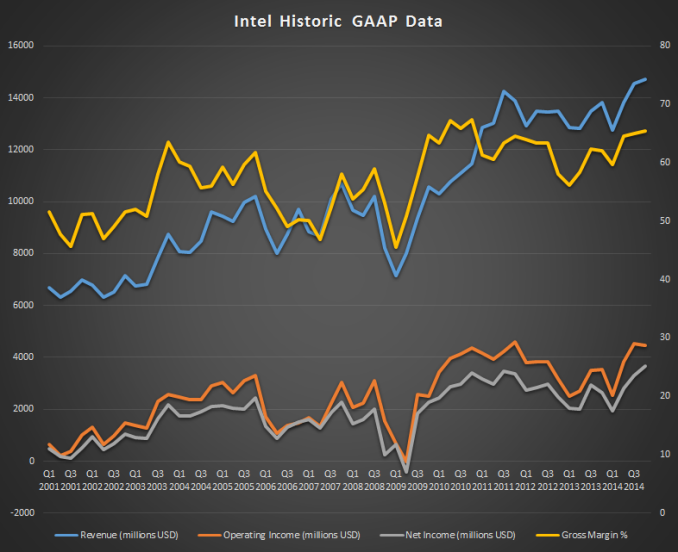
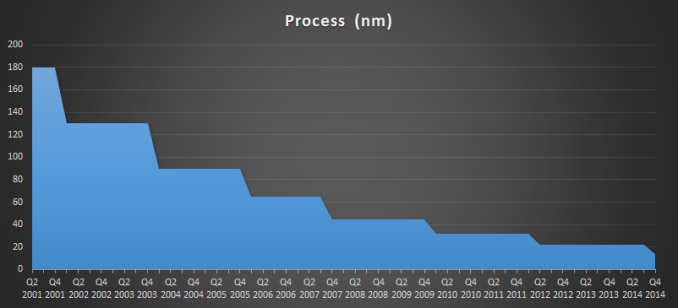
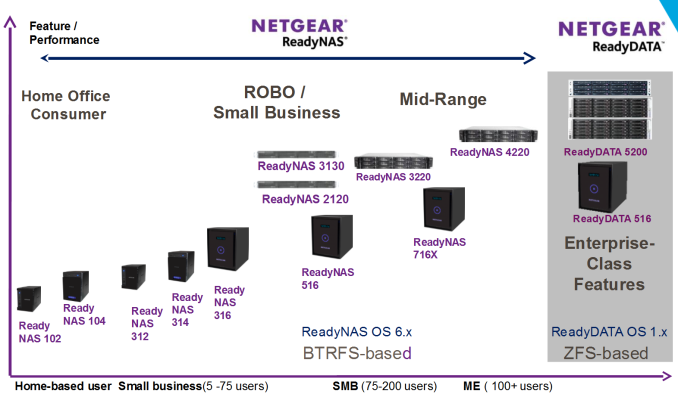

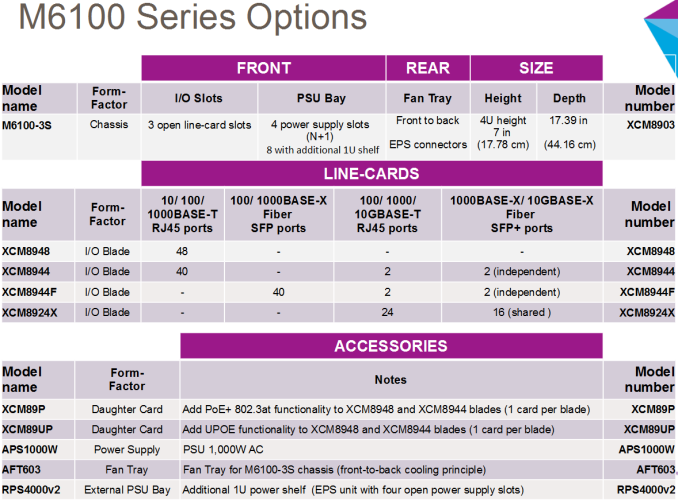
_575px.jpg)
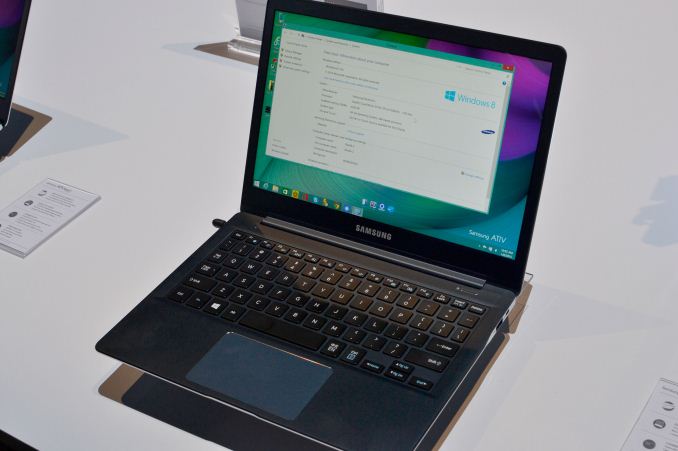
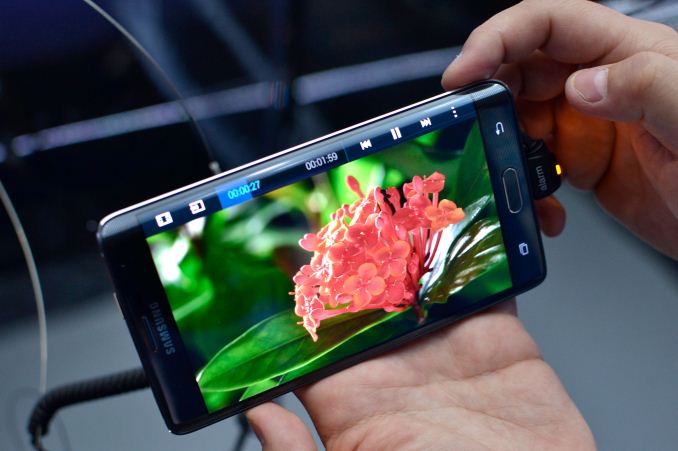


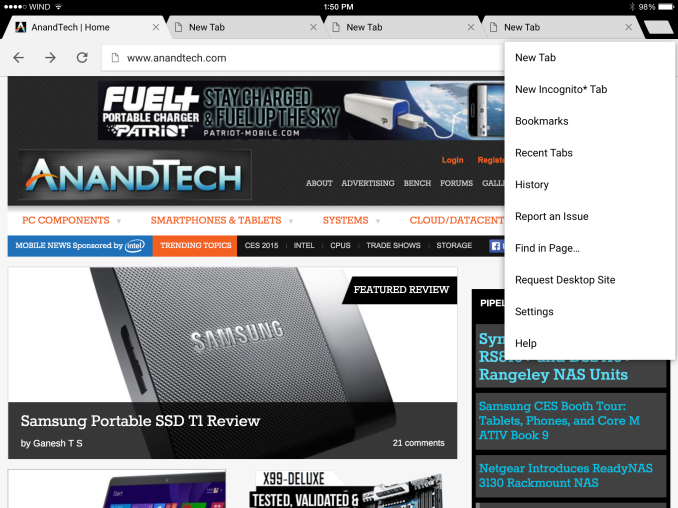
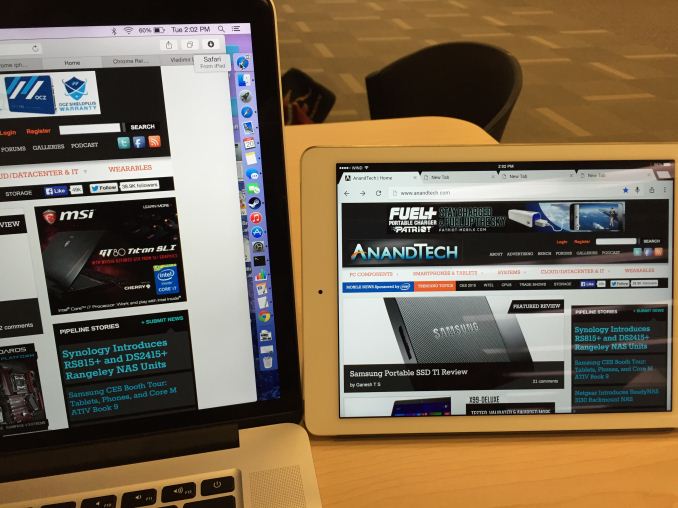




















Bookmarks